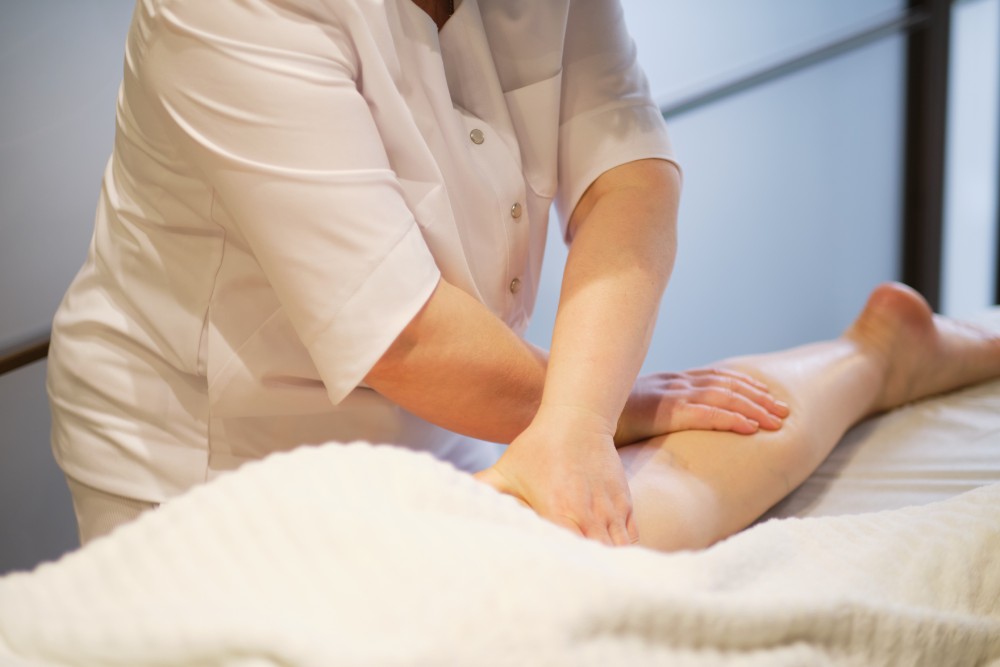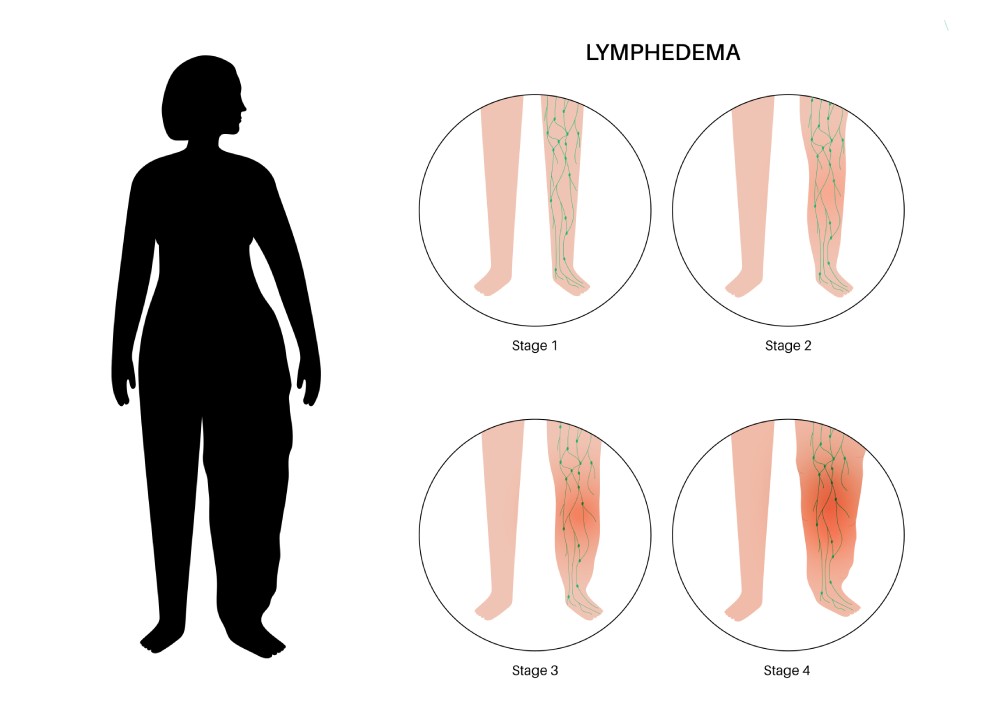
Lymphoedema – What You Need to Know
Lymphoedema is a chronic condition involving the accumulation of lymphatic fluid, typically in the arms or legs, due to damage or blockage in the lymphatic system. It can be caused by surgery, cancer treatments (like radiation), trauma, or congenital conditions.
Common signs include:
- Persistent swelling (especially in limbs)
- A feeling of heaviness or tightness
- Discomfort or reduced range of motion
- Recurring infections in the affected area
- Skin thickening or hardening (fibrosis)
- Pins and needles
- Painful joints
Underlying Causes and Risks Factors
- Cancer treatments – Surgery or radiotherapy that removes or damages lymph nodes
- Infections – Especially parasitic infections (in some regions)
- Trauma or surgery – Injuries that impact lymphatic drainage
- Obesity – Increases pressure on lymphatic vessels
- Congenital conditions – Inherited malformations of the lymphatic system
- Reduced mobility – Lack of movement impairs fluid circulation
- Recurrent cellulitis – Infections that damage lymphatic vessels
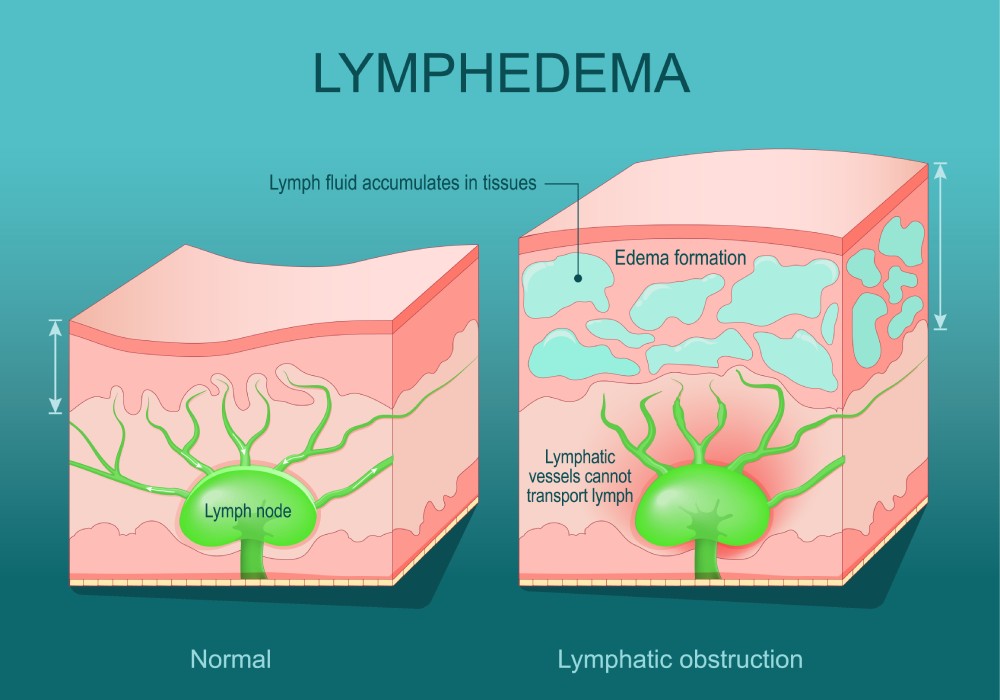
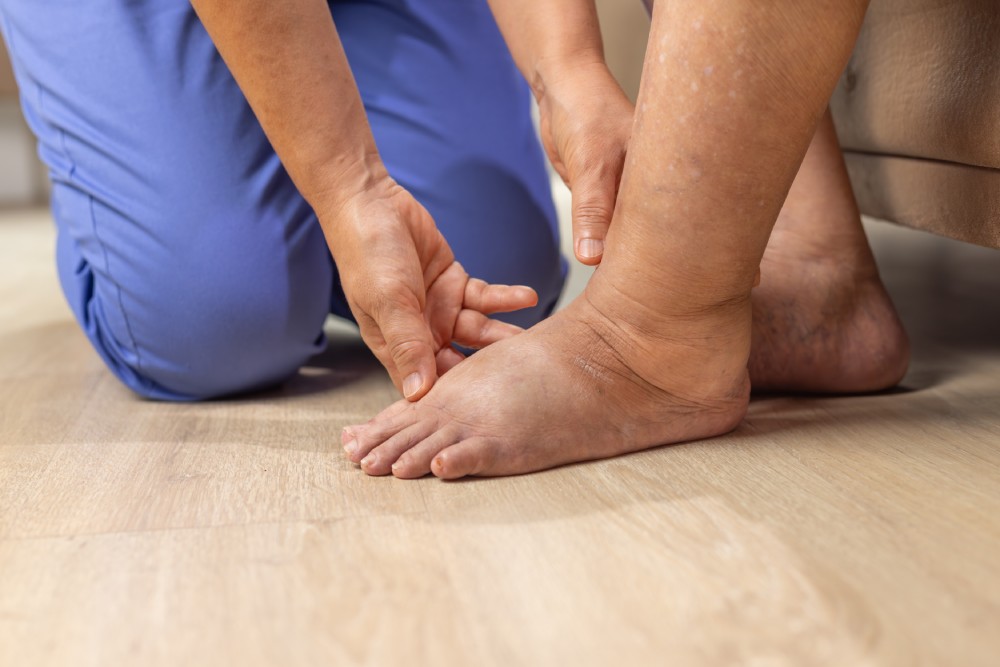
Lymphoedema Detection and Evaluation
Diagnosing lymphoedema involves a combination of clinical evaluation and, in some cases, diagnostic imaging. A healthcare professional will assess your symptoms, medical history, and potential risk factors to determine the presence and stage of the condition. Early diagnosis is essential to prevent progression and manage symptoms effectively.
Diagnostic steps may include:
- Physical examination – assessing swelling, skin texture, and limb measurements
- Medical history review – including cancer treatments, surgeries, or infections
- Imaging tests – lymphoscintigraphy, MRI, or ultrasound to view lymphatic flow
- Bioimpedance testing – measures fluid build-up in the tissues
- Rule out other causes – blood clots, venous insufficiency, or heart issues
Prompt diagnosis supports better outcomes through early treatment and self-management strategies.
Treatments Available at Body@Boronia
At Body@Boronia, our experienced allied health team provides evidence-based support for clients with lymphoedema.
Depending on your needs, your treatment plan may include:
- Oncology Massage – Gentle massage designed to stimulate lymph flow and reduce swelling
- Remedial Massage – Tailored techniques to manage tissue tightness and discomfort
- Myotherapy – Soft tissue and manual therapy targeting pain and mobility issues
- Clinical Pilates – Strengthening and low-impact movement to support lymphatic function
- Exercise Physiology – Safe, individualised exercise programs to promote circulation and reduce fluid build-up
- Osteopathy – Manual therapy to encourage fluid drainage and relieve physical restrictions
- Compression Advice – Guidance on appropriate garments or bandaging for fluid management
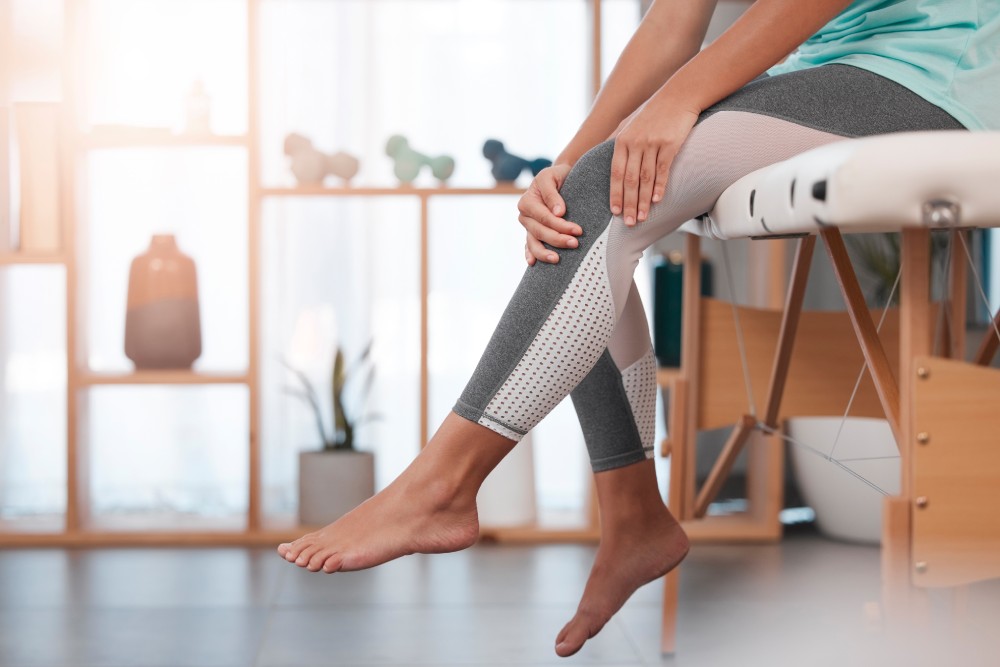
What to Expect
Your first consultation will involve a thorough assessment to understand the stage and impact of your lymphoedema. Our practitioners will tailor a program based on your symptoms, lifestyle, and goals. Ongoing treatment may involve hands-on therapy, exercise guidance, and education to empower you in managing your condition long term.
We work collaboratively with your broader healthcare team, including GPs and specialists, to ensure continuity of care.
Living with Lymphoedema
Living with lymphoedema involves ongoing self-management to reduce swelling and maintain comfort, but with consistent treatment and lifestyle adjustments, individuals can lead active, balanced lives while minimising flare-ups and complications.
Need Support?
If you have symptoms or a lymphoedema diagnosis, speak to our reception team to book with a qualified practitioner.


